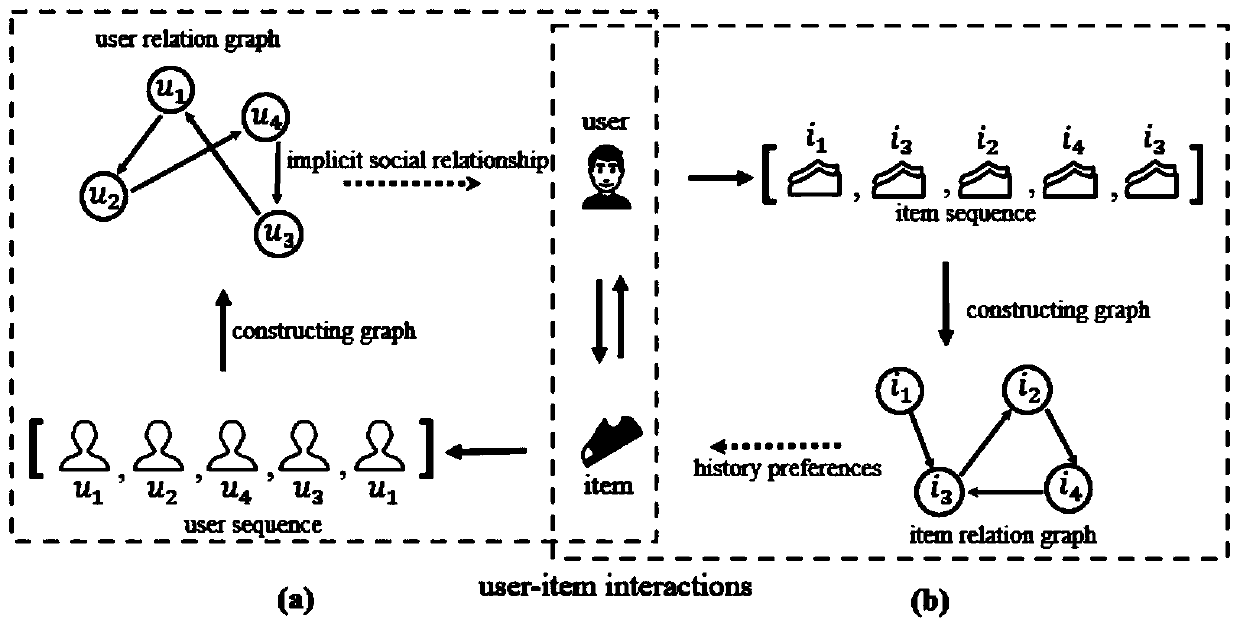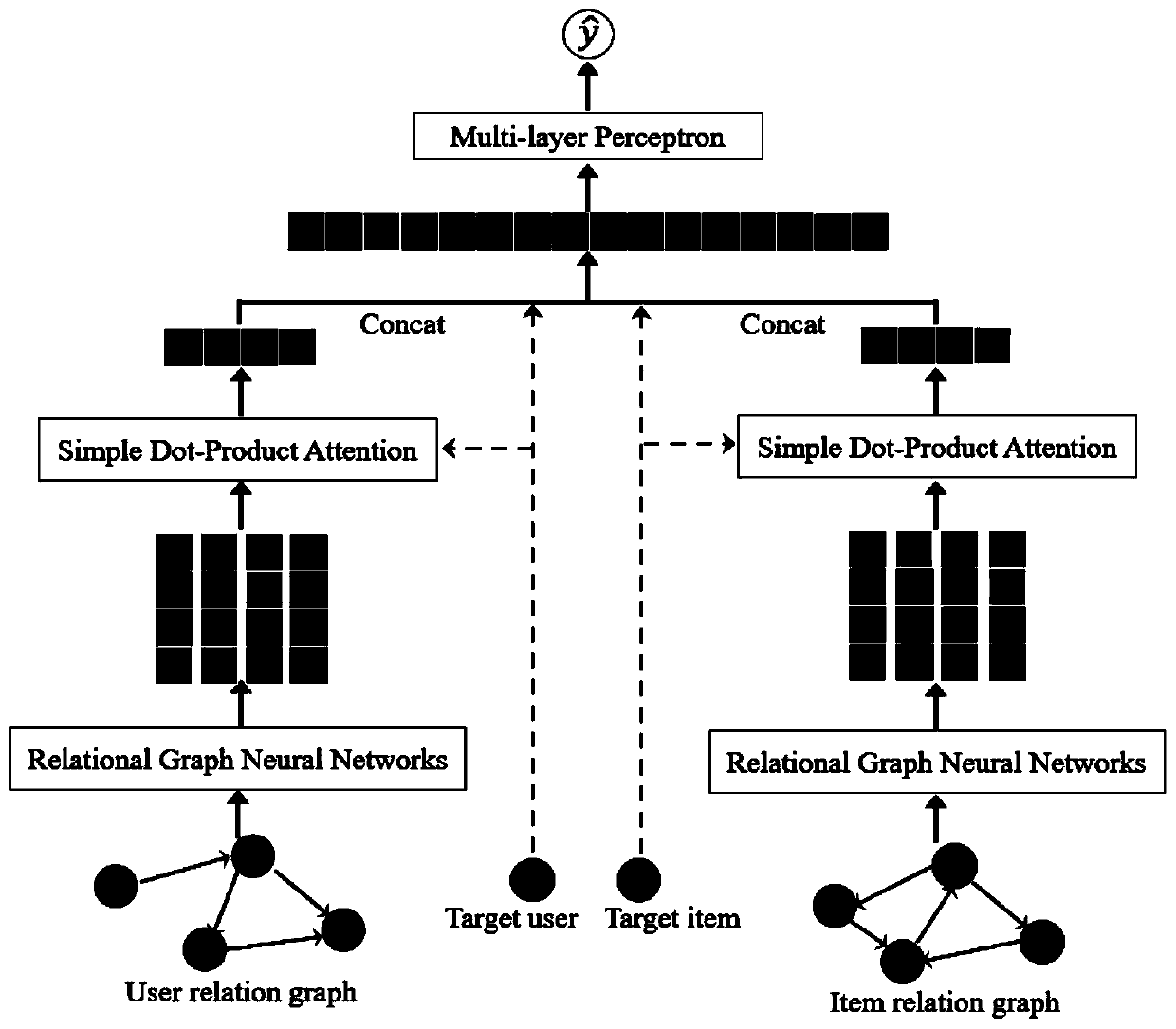Multi-relation collaborative filtering algorithm based on graph neural network
A collaborative filtering algorithm and neural network technology, applied in the field of multi-relational collaborative filtering algorithms based on graph neural networks, can solve problems such as affecting user decision-making behavior, not considering the important role of user roles, and difficult to obtain.
- Summary
- Abstract
- Description
- Claims
- Application Information
AI Technical Summary
Problems solved by technology
Method used
Image
Examples
Embodiment Construction
[0065] In order to make the technical problems, technical solutions and advantages to be solved by the present invention clearer, the following will describe in detail with reference to the drawings and specific embodiments.
[0066] The present invention aims at the existing collaborative filtering model which only considers the relationship between users and items when modeling user preferences, but ignores the relationship between items and the relationship between users. The problem of fully learning the user's preference in item history interaction provides a multi-relational collaborative filtering algorithm based on graph neural network.
[0067] Such as Figure 1 to Figure 3 As shown, the embodiment of the present invention provides a multi-relational collaborative filtering algorithm based on a graph neural network, including: step 1, processing the historical interaction data between users and items, and extracting all user sequences S U and item sequence S I ; Ste...
PUM
 Login to View More
Login to View More Abstract
Description
Claims
Application Information
 Login to View More
Login to View More - R&D
- Intellectual Property
- Life Sciences
- Materials
- Tech Scout
- Unparalleled Data Quality
- Higher Quality Content
- 60% Fewer Hallucinations
Browse by: Latest US Patents, China's latest patents, Technical Efficacy Thesaurus, Application Domain, Technology Topic, Popular Technical Reports.
© 2025 PatSnap. All rights reserved.Legal|Privacy policy|Modern Slavery Act Transparency Statement|Sitemap|About US| Contact US: help@patsnap.com



